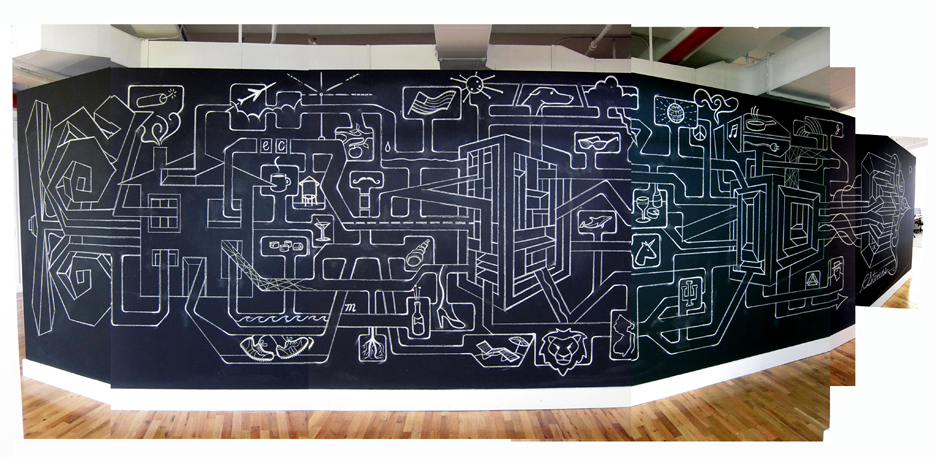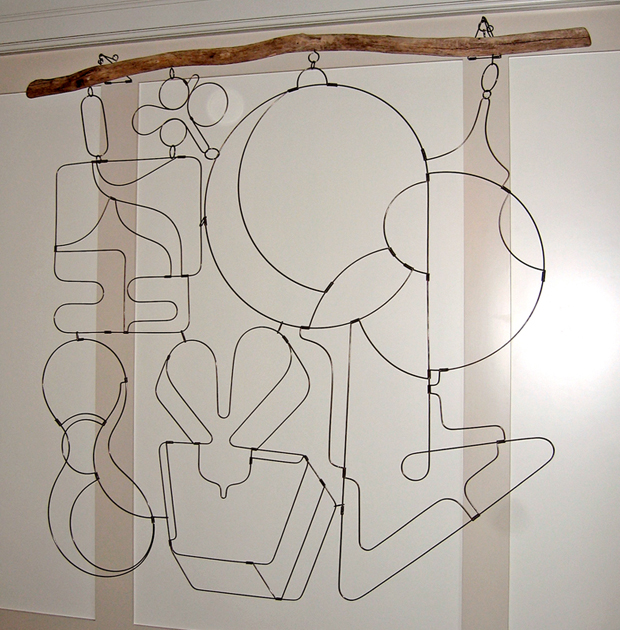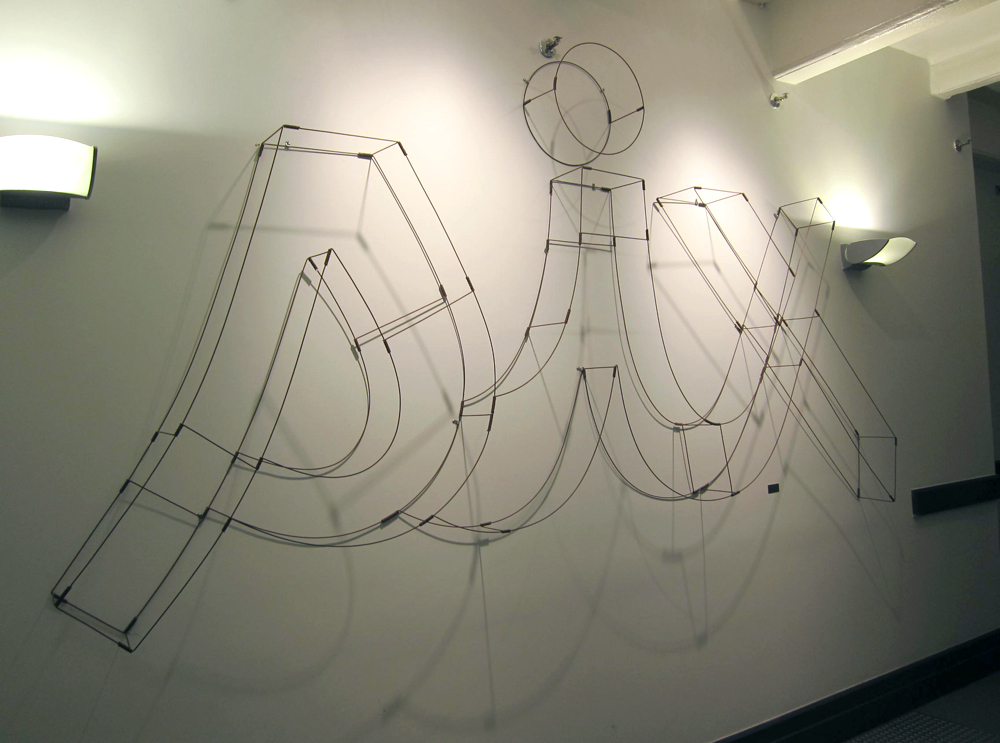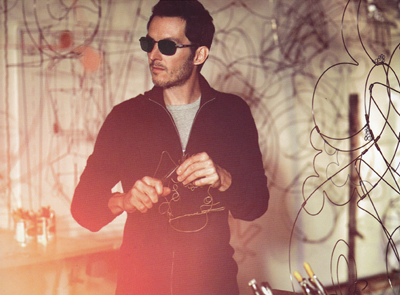mdby……RODGER STEVENS








Today, I want to talk you about Rodger Stevens, he works with wire in an amazing way, and getting very attractive objects. He tells us how he came into it, and he shows his passion for what he does, in a really inspiring interview….
Economical studies, then Art, Sotheby and now wire sculptor, did you need these steps to get to know what to do? Or it was a natural process through which you opened your mind to get to know what to really wanted?
I loved drawing and making things ever since I was very young – it was a precious interest to me, a very big part of who I was and I assumed that it always would be. When it was time to choose a field of study in college I wanted to explore a subject that was thoroughly different from art, something I knew nothing about. I never stopped making art while I pursued a degree in Economics, but instead placed this new – to me, exotic – body of knowledge alongside of it. Working at Sotheby’s seemed like an ideal synthesis of these two worlds. Working there was a fascinating experience, extremely edifying both artistically and professionally, but after several years the drive to make art was overwhelming and ultimately I chose to dedicate myself to it fully.
You create great sculptures with several materials, but the principal material is wire. I’ve seen in a video by Persol, you just work on wire directly, without any model to follow or drawings, is that how your inspiration comes, directly your mind, hands and wire?
That is a wonderfully concise of way of delineating my whole creative process: “mind, hands, wire”. I do see these objects quite clearly in my mind before making them. As I work, I am referring to that “model” – sometimes I deviate from the picture; often times I build it just as I have imagined it.
You use wire in its natural color or white, why you do not use any bright color?
When I first started working with wire, it was a black annealed steel wire that I would find at construction sites around the city. It had a wonderful malleability and the color and finish looked just like that of a pencil line. Sculpting with that material was very similar to drawing and the objects I made looked to me like drawings that had come up off a page; they were drawings that in some sense became “real”. I don’t think I’ve ever let go of that initial impression – whenever I have colorized the wire that effect is diminished and I feel the work suffers. It’s a very personal, very subjective opinion and I know I should probably reconsider it.
You create mobiles; they always have specific meaning for each person, which is yours?
I’ve done many self-portraits. Sometimes they are very elaborate, autobiographical compositions, encompassing a range of emotions, thoughts, or events in my life. Occasionally I will make a minor appearance in a piece, represented simply as a drop of sweat. I work pretty hard – at being an artist, a dad, a son, a husband – so the sweat droplet seems like a fairly appropriate slyph.
Each piece you fabricate, you consider it as unique piece?
Yes. Unequivocally. There is no shortcut to making one of these pieces, no way to duplicate them mechanically. Not yet. Mind, hands, wire – each time.
Which would be your ideal project?
Having a show at the Metropolitan Museum of Art.
You work by your own and I suppose is quite difficult to increase your firm doing your type of work. Do you feel good working alone all day long?
I adore “working alone all day long”. It is no exaggeration to say that I feel grateful for every single day that I can walk into my studio and just start working … until, of course, my kids come home from school, then I adore being with them.
Do you spend time in your work to publications or other media to make yourself know and increase sales, or you have someone to help you?
I realized quite early that surviving as an artist requires putting your work where people can see it: in galleries, in magazines, hanging from lampposts on Fifth Avenue. Self-promotion is not easy, it is rarely enjoyable, but it is unavoidable. And, as I have never had an assistant, all the self-promotion I do is exactly that: me promoting myself.
Which is the most difficult thing in your work?
Self-promotion.
Which is what you like more from your work?
It is very difficult to articulate just what is so satisfying about working, why it is that time and tedium and tension evaporate during the process. I suppose everyone has an activity that aligns with their psyche and their biology so that some sort of state of contentedness results … for me, it’s making things.
Which one has been your biggest success?
There are creative successes, little achievements within the work itself that are rewarding, even thrilling. And there are material, professional successes that come in the form of high profile clients or renowned exhibition venues. Both types are always welcome and nearly always hard to come by.
What is your biggest dream for the future?
That circumstances allow me to continue to do what I do.
What is beauty for you?
My family. The sheer spectacle of existence.
An advice?
Try to find that thing I mentioned earlier, that endeavor that naturally corresponds to your chemistry, then figure out a way to survive doing it. And forget about being rich.